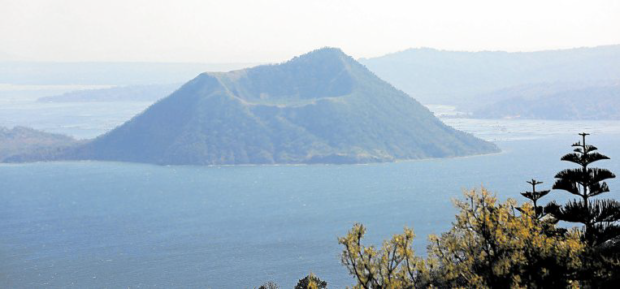LUCENA CITY — Taal Volcano emitted less sulfur dioxide (SO2), but volcanic smog or “vog” remained on Tuesday, the Philippine Institute of Volcanology and Seismology (Phivolcs) reported on Wednesday, June 12.
Phivolcs had measured 2,479 metric tons (MT) of SO2 from the volcano’s main crater since June 10 and over the past 24 hours, the report said.
The plumes rose to 2,400 meters above Taal Volcano Island, the volcano’s crater landmass, locally known as “Pulo,” that sits within Taal Lake, before drifting north-northwest and southwest.
One volcanic tremor that lasted seven minutes was also detected during the monitoring period.
READ: Taal Volcano spews 2,400-meter high plume, says Phivolcs
State volcanologists also noted the presence of “vog” during the latest observation period.
Vog is composed of SO2 gas and could irritate the eyes, nose, and throat. People with respiratory conditions and pregnant women are at greater risk.q
Phivolcs advised people exposed to vog to use face masks, drink plenty of water to ease the discomfort from exposure, and consult a doctor, if needed.
The latest emission was a significant drop from the 11,072 MT logged on June 6 to 9.
READ: Vog threatens Taal area anew as volcano spews more harmful gas
“Taal has averaged approximately 8,294 tonnes/day for the year and has been continuously degassing voluminous concentrations of SO2 since 2021,” the Phivolcs said in its advisory on June 6.
Hazy conditions were observed around Taal Volcano, the authorities reported.
Phivolcs reminded the public that degassing of high concentrations of volcanic SO2 continued to pose long-term health impacts to communities frequently exposed to volcanic gas.
Alert Level 1 prevails over Taal Volcano, indicating that it is still in abnormal condition and should not be interpreted as having ceased unrest.
Phivolcs reminded the public that entry into Taal Volcano Island, especially the main crater and Daang Kastila fissures, and boating and flying any aircraft close to the volcano remained prohibited.
